Nestor Basterretxea, a modern and complete artist
Euskaraz irakurri: Nestor Basterretxea, modern artist eta osoa
One hundred years have passed since the birth of Nestor Basterretxea. The Basque artist came into the world on May 6, in Bermeo, and died on July 12, 2014 in Hondarribia, at the age of 90. In that journey, he left a valuable and deep mark on the history, not only artistic – art, although despite some, is not a watertight terrain – of Euskal Herria.
It is impossible to enclose the life and work of Basterretxea in an article; His experiences and his production are projected to form an incomprehensible group: the exile after Franco’s coup d’état (Ipar Euskal Herria, France and Buenos Aires) and his subsequent return; the creation of the artistic groups Equipo 57 and Gaur; the murals in the crypt of the Arantzazu sanctuary (he began this work in the 1950s and finished it, prohibited, in 1985); his profuse pictorial work and, above all, sculpture (Basque Cosmogonic Seriespublic art…); Izaro, symbol of the Basque Parliament, and other iconographic works such as the logo of the historic Bai Euskarari campaign; his work in the field of industrial design and architecture; the fundamental film Mistress Lur and the rest of his cinematographic work…
A few modest samples of this almost unlimited work are useful to stimulate the reader’s desire to delve deeper into Basterretxea’s work.
MURALS OF THE CRYPT OF ARANTZAZU
In 1952, upon his return from Buenos Aires, Basterretxea was chosen to be in charge of the murals in the crypt of the Arantzazu basilica. After a year of work, the decoration of the sanctuary was paralyzed in 1954, by order of the Bishopric of San Sebastián and the authorities of Rome, and Basterretxe was not finally able to finish his work until 1985.
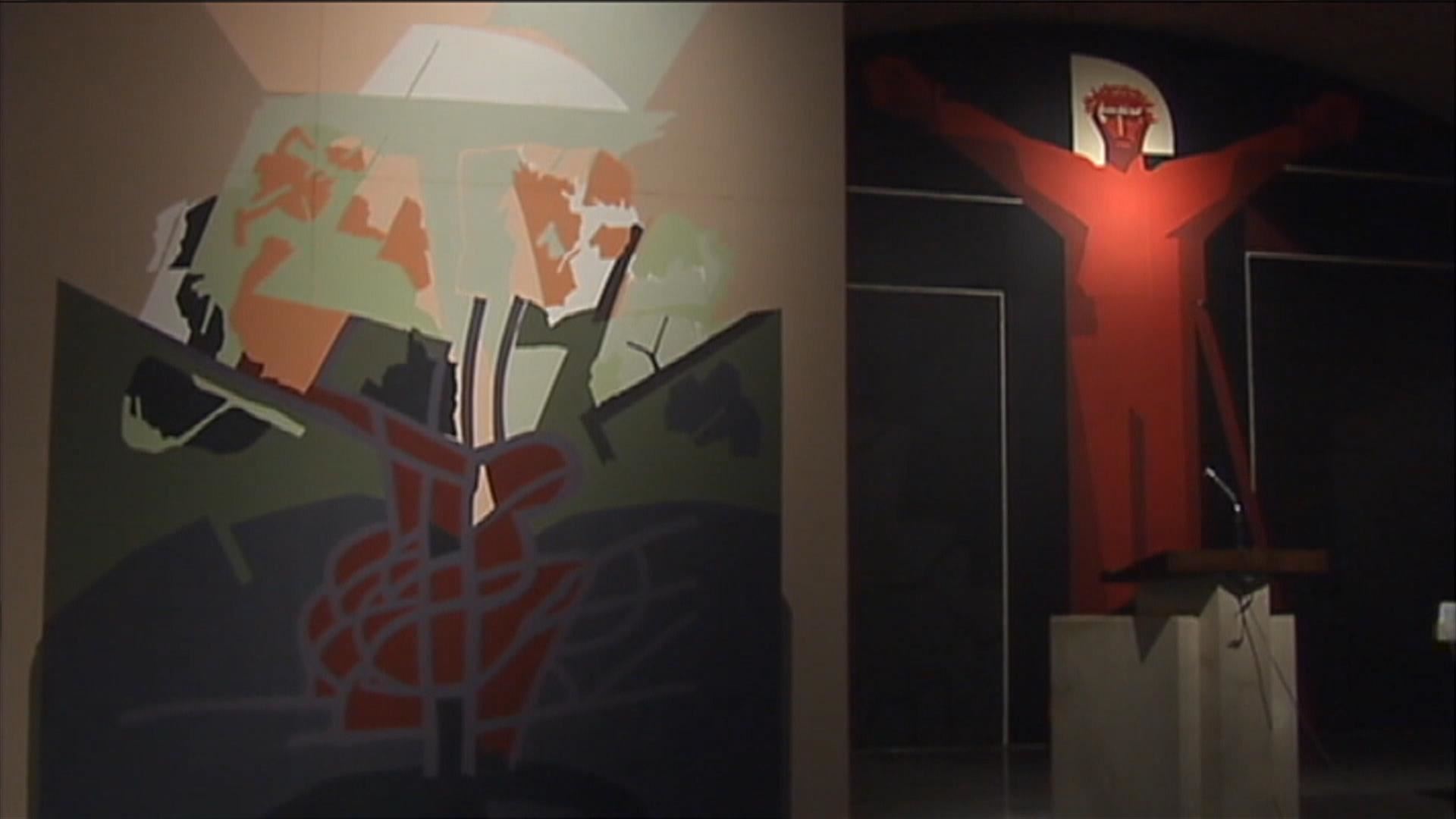
“AMA LUR”
Basterretxea also made use of cinema to express himself, accompanied in some of his projects by Fernando Larruquert. In 1966, they filmed the film Mistress Lur“an authentic founding work of Basque cinema,” according to curator and art critic Peio Aguirre.
The film offers a rich look at Basque culture, and is a portrait of Euskal Herria and its inhabitants.
Two years had to pass until its premiere, since Franco’s censorship prevented its screening until the celebration of the Zinemaldia in San Sebastián in 1968.
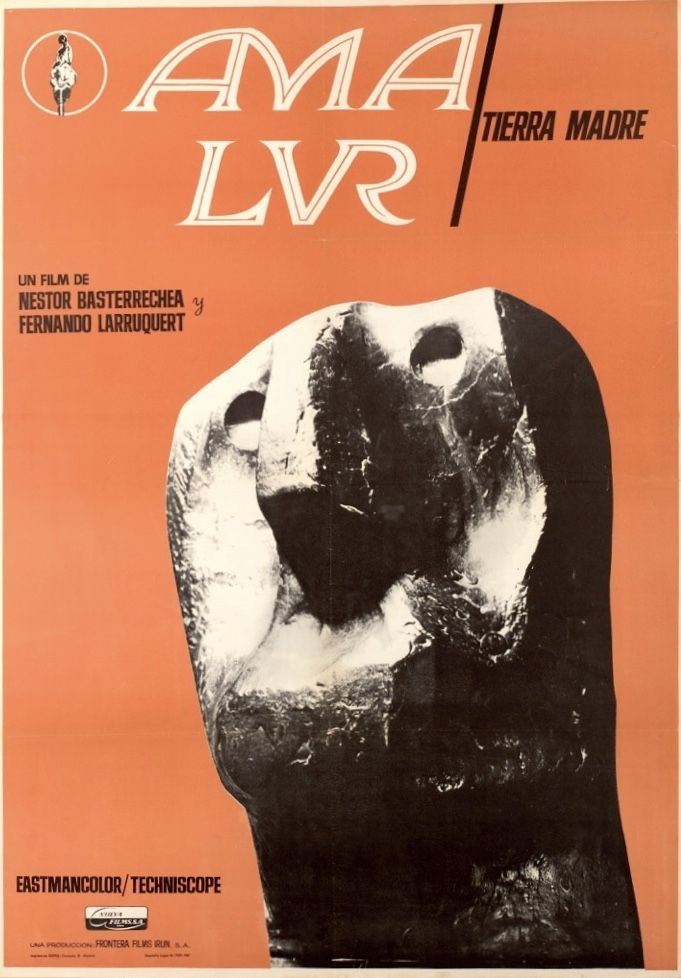
BASQUE COSMOGONIC SERIES
It is a set of 18 sculptures, 17 made of oak wood and one bronze, made between 1972 and 1975. “The pieces are based on mythological characters, forces of nature and traditional objects of Basque culture,” as explained by the Museum of Fine Arts of Bilbao. It was in this space where these pieces were shown for the first time, in 1973.
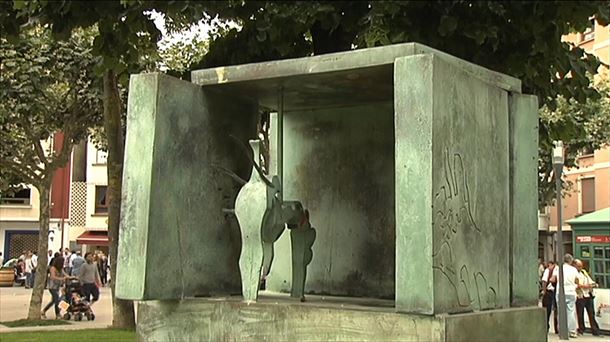
Bronze reproduction of one of the elements of the “Basque Cosmogonic Series”, in Bermeo
The drawings of the series were taken from Basque Mythology Dictionary (1972) by Jose Miguel Barandiaran, which illustrates the work carried out by Basterretxea in pursuit of creating a Basque imaginary, in line with his work in Mistress Lur.
Throughout his career, Nestor Basterretxea reached the universality of art starting from the Basque.
IZARO
In this exercise of materializing Basqueness, Nestor Basterretxea gave the Basque Parliament an image after winning, in 1982, an ideas contest. The sculpture Izarosymbol of the parliament of Álava, Bizkaia and Gipuzkoa, is a two-meter piece, a tree from which seven branches sprout, one for each Basque historical territory.
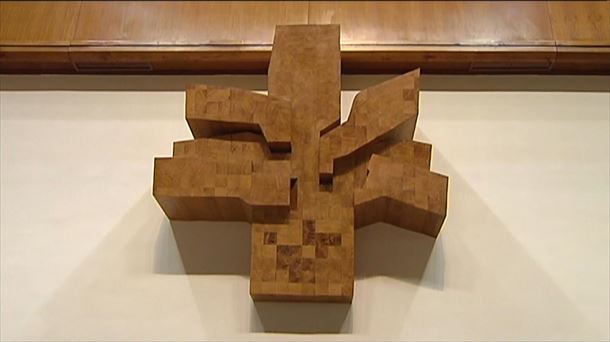
‘Izaro’, Eusko Legebiltzarraren ikurra
In the vibrant post-Franco political and social era, Basterretxea made different contributions to popular movements, such as the ikastolas or media. The logo for the Bai Euskarari campaign in favor of Basque in 1978, the symbol in favor of the Statute of Gernika, the Aberri Eguna poster belong to this area…
PUBLIC WORK
Obviously, the public works of Nestor Basterretxea, the works that we can enjoy in the streets of Euskal Herria and other places, are the best-known part of his work.
They stand out among them Bakearen Usoa (inaugurated in 1988 and subject to a round trip transfer to Amara, to Plaza Aita Donostia), in San Sebastián, as well as Olatua (2006) and Matxitxakoko Guda (2007) in the artist’s hometown. He is known, too, Euskal artzainen omenezko monumentu nazionala (1989), placed in Reno (Nevada, USA) in homage to the Basques who moved there at the beginning of the 20th century mainly to work as shepherds.
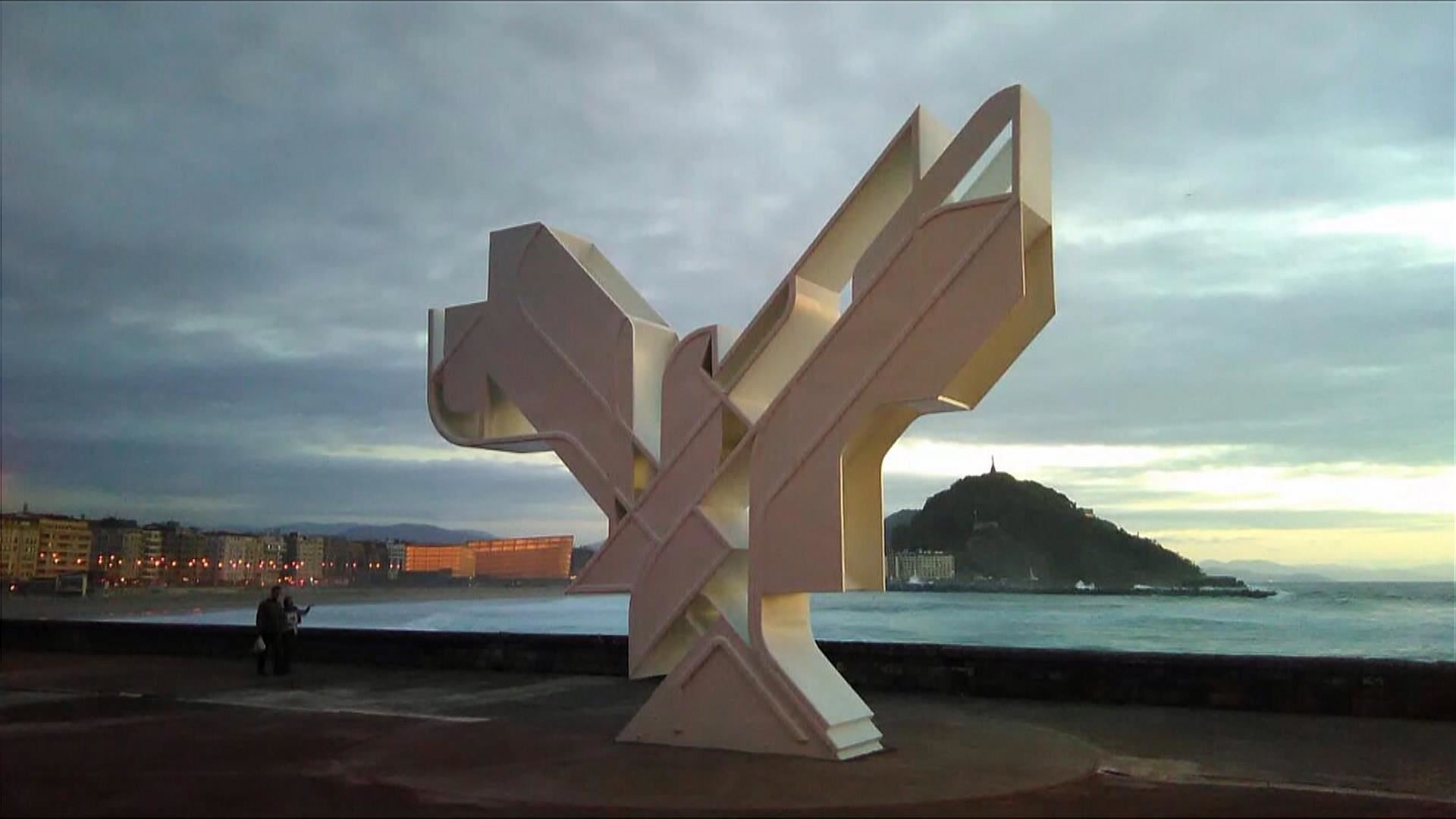
“Bakearen Usoa.” AOB, CC BY-SA 4.0, via Wikimedia Commons
The work of Nestor Basterretxea can be enjoyed in various locations throughout the Basque Country such as Vitoria-Gasteiz, Pamplona, Goraine-Irabarne, Sartaguda, Bilbao, Baiona, Leioa, Zeanuri, Oñati, Mutriku, Hondarribia, Tolosa…
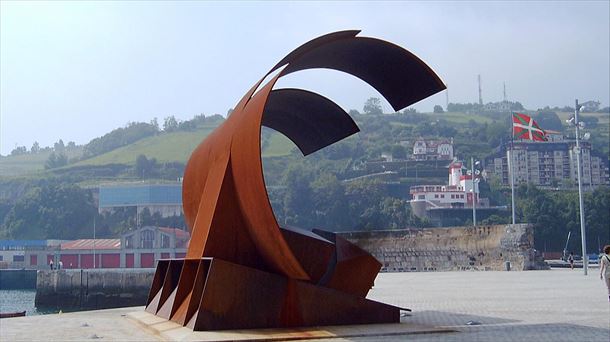
“Olatua.” I, Telle, CC BY-SA 3.0, via Wikimedia Commons
ARCHITECTURE AND DESIGN
Basterretxea wanted to study Architecture, something that the Civil War and exile did not allow him to do, but that did not prevent him from developing different jobs both in that field and in design, especially furniture.
The curators Peio Aguirre, Pedro Feduchi and Pedro Reula have prepared an exhibition, open at the Museum of Fine Arts of Bilbao, which brings together collages of architectural projects, pieces of industrial design, furniture, the documentary memory of the projected Irun house-workshop together with Oteiza and Vallet, architectural volumetrics of a utopian nature on paper, architectural and urban planning models, photographic documentation… It can be visited until May 26.
Source: Eitb
Bruce is a talented author and journalist with a passion for entertainment . He currently works as a writer at the 247 News Agency, where he has established himself as a respected voice in the industry.












